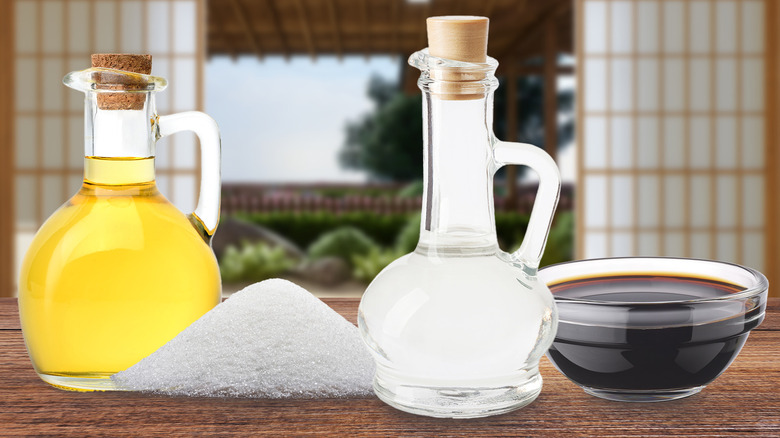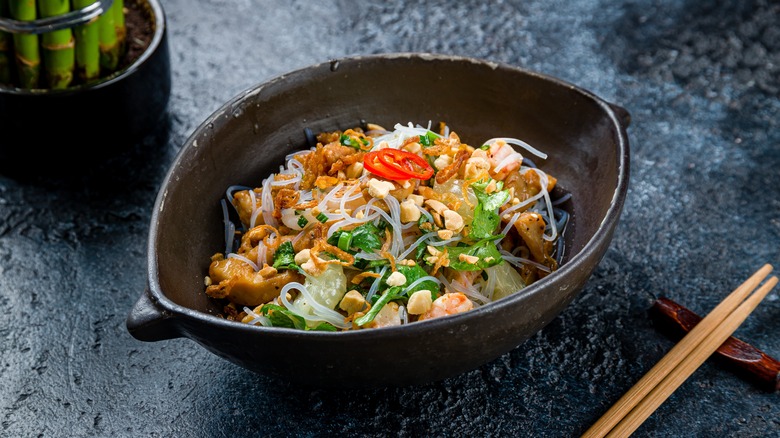The Perfect Ratio For Making Asian-Style Vinaigrettes
If you're ready to take your culinary game to new heights, it's time to learn about some cooking fundamentals. And what better way to do it than with a delicious Asian-style vinaigrette? Perfect for Asian salads, which are essentially cold plates that don't necessarily include salad greens, these tasty dressings can add a lot to many dishes. Once you master the fundamentals of these vinaigrettes, you'll be improvising to glorious effect in no time.
Western vinaigrettes are a simple ratio of 3:1 – 3 parts oil to 1 part acid. If you're not familiar with what we mean by parts, it's easy. For every 3 tablespoons of oil, you would need 1 tablespoon of acid (such as vinegar). And for 6 tablespoons of oil, you would need 2 tablespoons of acid. No matter what unit of measurement you're using — tablespoons, cups, even quarts if you need a lot of vinaigrette — just make sure the ratio is correct. It's all about balancing the ingredients.
For Asian-style vinaigrettes, we're going to take this 3:1 ratio and expand it to make a 3:3:1:1 ratio – 3 parts oil, 3 parts soy sauce, 1 part acid, and 1 part sugar. Of course, once you've mixed the ingredients and tasted it, you may decide to tweak the recipe a bit. By using this ratio you are simply setting up the foundation for your vinaigrette. You may discover that it's perfect as-is or you may decide to add a little more vinegar or soy sauce. By bringing in the umami of Asian ingredients, we can achieve that rich Asian flavor that we're looking for.
The delicious details of Asian-style vinaigrette-making
Now that we have the ratio right, you may be wondering how exactly to use it. That's where your creativity comes into play. Learning the ratio of this style of vinaigrette is like learning a piece of music theory. Now, it's up to you to figure out what music you want to play. If you want to really lean into the Asian style, sesame oil is a good option — but a little sesame oil goes a long way and you may want to choose a different base to keep your costs down.
Consider making a seasoned oil using a cheaper oil as a base, such as olive oil or vegetable oil, which you can mix with various spices like chili pepper or ginger. It's really up to you how you fill these ratios in. Keep in mind that the oil gives both flavor and body to the dressing, the soy sauce brings the umami that is key for Asian cuisine, and the acid and sugar balance out the powerful flavors and saltiness of the soy sauce. As you are finetuning your creation, keep in mind how these flavors are interacting.
As for what to put your vinaigrette on, there are plenty of Asian cold dishes to choose from. Add it to a colorful toasted sesame noodle salad or sub it out for the usual dressing in bibim guksu, otherwise known as Korean cold noodles. You're not restricted to just raw ingredients, either. Take some veggies, cook them up, allow them to cool down in the refrigerator, then toss them in your homemade vinaigrette.

